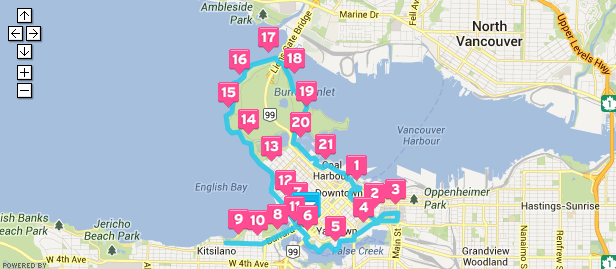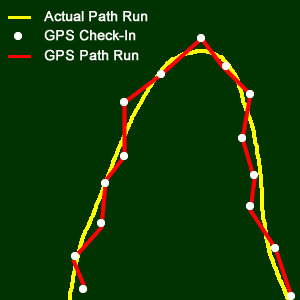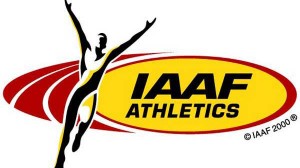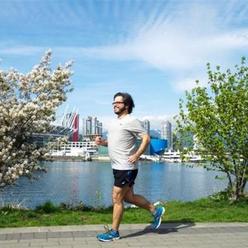Anybody who has run a race with a GPS has probably noticed that their device says that they ran longer than the ‘official’ length. This has led many people complain to the race director that their course was poorly measured. In fact it is one of the most often complaints that race organizers hear.
But when you think about it, this complaint doesn’t make much sense. Who would you trust more, somebody in charge of an event that often costs hundreds of thousands of dollars to host, or a $200 portable device? So why is this complaint so common?
Course Measurement
These days most running events are run on ‘certified courses.’ The purpose of course certification is ensure that road race courses of accurately measured distances, so that one 10K race is directly comparable to another. In the US, USA Track and Field (USATF) is the main course certifier. Here in BC, BC Athletics does most of the course certification.
The course is measured along the shortest possible distance between the start line and the finish line. This entails taking the shortest possible line on all curves, roads and tangents. It is difficult for any runner, including the leader, to meet every tangent in the course. As a result, most runners—especially recreational athletes—run a longer distance over the course of an event.
GPS Devices
A GPS device, worn in a race, will always record a distance different from an accurately measured course. Unlikely the distance counters used to certify a course, a GPS device—such as a Garmin watch or an iPhone—measures the distance of wherever you go during a race; including water stations and porta-potties. It also measured all the steps to take spend weaving around slower runners at the beginning of the race, the steps you take running to the side of the road to get your picture taken or high-five you best friend. Basically, wherever you do not run the short line tangent in the road, the extra distance you cover is measured by the GPS.
But even if you were to run the same tangents used by the certifiers, your GPS would still likely measure a slightly different distance. This is because GPS devices in Canada are only accurate to within 7 metres (or 23 feet). This means that there is a 14 meter bubble around you when you move where the GPS could be taking its measurements from. As a result, over the distance of a kilometre, your GPS could be as much as 140 meters off.
Difference Between Certification and Sanctioning
There is a difference between certifying and sanctioning a course:
Course certification acknowledges that the course has been accurately measured in accordance with international standards. A course certification is valid for 10 years, or until the course changes. Usually, qualifying standards for races such as Boston must be run on a certified course.
Sanctioning is concerned with risk management and the integrity of the distance. Sanctioning becomes important to recording records.—for example at world records must be set on courses sanctioned by the International International Association of Athletics Federations (IAAF). Sanctioning is valid for one year and is subject to yearly review and re-application.
Some high-profile courses are certified for distance, but not sanctioned. For example, the Boston Marathon course is not officially sanctioned by the IAAF as it is point to point route (and therefore runners can aided by a tailwind) and it is a net downhill course. As a result, while Kenyan Geoffrey Mutai‘s time of 2:03:02 at the 2011 Boston Marathon is unofficially “the fastest Marathon ever run,” it is not considered a world record. The official men’s marathon world record is a few second slower at 2:03:38, set by fellow Kenyan Patrick Makau a few months later at the 2011 Berlin Marathon.
Your Turn
I hope that this helps clear up some questions you may have had about measure race course. I’d love to hear from you about your ‘long run’ experiences. Please leave a comment telling me about a race you were certain was longer than the stated distance.












